It was exactly one month ago - on March 24 - when we first laid out the big dilemma facing the Bank of Japan, which on one hand was hoping to avoid a currency collapse (for obvious reasons) and prevent a crash in the yen, while on the other hand, was also hoping to keep the 10Y yield below its extremely dovish 0.25% yield curve control rate ceiling. The problem is that while the BOJ can control one or the other, it can't control both; this is what we said then:
Japan, that paragon of MMT crackpots everywhere, suddenly finds itself trapped in a lose-lose dilemma: intervene in the bond market and spark a furious, potentially destabilizing and uncontrolled plunge in the yen which would also lead to galloping (if not worse) inflation, which could collapse what little faith remains in the BOJ, or do nothing and contain the slump in the yen while risking far higher yields which in a country where the debt is orders of magnitude greater than GDP, could also spell fiscal and monetary doom.
As a result, the market - having long gotten used to amicable interventions from the BOJ - will now surely test one of these two outcomes, and how the BOJ responds could have dramatic consequences for this original MMT test case. Should the BOJ's reaction spark further erosion of faith in either Japan's fiscal or monetary policies, the outcome for the world's most indebted nation would be disastrous.
A few days later, SocGen's permaskeptic (he is not big a fan of the word "permabear") Albert Edwards picked up on this line of thought and in an extensive note laying out his thoughts on Japan's "lose-lose dilemma", added a new twist, namely that as the yen implodes, China - whose currency has been surprisingly strong even as its economy has hit a brick wall - will follow suit and devalue its own currency.
Since then two things have happened: i) as we predicted, the Japanese yen has crashed and as we discussed last week, suffered its longest stretch of one-day declines in history pushing it to a 20 year low, and prompting the BOJ to quietly beg Janet Yellen for some coordinated currency intervention (which however, the US Treasury shot down late last week)...
... and just as importantly, ii) the yuan has also suddenly cratered, suffering its biggest weekly loss since the surprise devaluation in August 2015, after tumbling 2.1%; in a move which we said on Friday has spurred "Whispers Of Yuan Devaluation After Biggest Weekly Plunge Since 2015."
Ok, so both the yen and the yuan have cratered, largely due to fundamental schism in monetary policy as both Japan and China are the two major central banks who are currently easing (or in the case of China, mostly pretending to) even as the Fed is about to hike more than 10 times in 2022 according to market estimates. Hardly shocking and to be expected (at least for our readers).
But according to Albert Edwards, who refuses to let this story drop, not only is this divergence about to get much worse, but it will lead to catastrophic market consequences. It's also "the biggest story no-one is talking about."
In a note published late last week under the same title (and available to all professional subscribers), Edwards turns his attention to the yen and yuan, and writes that "surely all of us working in finance realize by now that something is likely to snap in the financial system and probably quite soon."
Why? Because according to the SocGen strategist, "the rapidity of current market moves and the polarisation of the now extreme Fed (hawkish) and BoJ (dovish) policies almost guarantees that outcome.... Maybe the outcome wouldn’t be so ugly if central bankers had not spent recent decades ramping up asset prices to today’s grotesque levels through their monetary incontinence. But they did."
Comparing the monetary policy divergence between the US and Japan to "a car crash in slow motion", Edwards writes that polarization in central bank monetary policy between the US Federal Reserve and Bank of Japan is being stretched ever wider to the point where "at some point soon your life might even flash before you (btw that really does happen. I know because it has happened to me twice, although only one was a vehicle collision)" he writes.
And while nobody died trading FX on Friday (that we know of), that's when the Bank of Japan continued to hold the line on its Yield Curve Control policy capping the 10y JGB yields at 0.25%, and even offered a second round of extremely dovish unlimited 10y bond purchases for a four-day period; at the same time the Fed's "super hawks" were trying to convince the market that a series of 50bp (or even 75bps) Fed Funds hikes were imminent (and judging by the crash in the Dow, they may have succeeded). Between these extremes of behavior, Edwards adds that "what the ECB and PBoC are getting up to is effectively just a sideshow, although still an important one."
It's not just Edwards who focuses on the divergence between the Fed and the BOJ: frequent ZH guest, Larry McDonald, author of the excellent Bear Traps Report writes that the current policy divergence consists of “a) the PBOC (cutting rates, 530bn yuan additional liquidity), b) the ECB winding down net asset purchases this quarter and setting up for a 2H rate hike, c) the BoJ’s aggressive balance sheet expansion, and d) the Fed’s promising 9-12 rate hikes looking out a year with QT aggressively involved.” and concludes “This type of insane monetary policy divergence will clearly break something, that is certain."
Picking up on this dire warning, Edwards notes that one place where something might break soon is in China; he quotes SocGen China expert Wei Yao who believes that the Chinese "economy is now in severe distress and requires aggressive easing. In that context, its strangulation caught between a rising renminbi and a slumping yen, is simply intolerable." This divergence - which SocGen calls the "jaws of exchange rate death" can only go on for so long before something snaps...
Stepping away China's problems for a moment, Edwards turns the spotlight to the Fed, whose "increasingly loud [and hawkish] chest-beating" is "for most commentators the most important financial market development at the moment."
Having moved from ‘expecting the recent surge in inflation to be transitory’ to admitting they are way behind the tightening curve, it seems the Fed is now willing to hike rates by 50bp multiple times this year. Meanwhile bond prices continue to abseil at an increasingly rapid pace in the face of this gathering gale.
Here Edwards interjects that a just as important development is what we first highlighted a month ago, namely that "the BoJ is engaged on an equally aggressive demonstration of their power – this time in refusing point-blank to acknowledge that 10y JGB yields will hardly even rise above 0.25% despite soaring yields elsewhere in G7. Its Yield Curve Control policy is not just being maintained, but the quantity of QE needed to maintain YCC is accelerating at warp speed. Japan central bankers are now also beating their chests in a demonstration of their power unseen in my working lifetime."
One can see the direct result of this in one of the most rapid divergences in the US-Japan 10y spread in history.
One can also see the consequence of this yield and QE/QT divergence in the rapidity of the yen exchange rate decline recently.
Of course, in the end one of the two central banks will capitulate first, and that will most likely be the BOJ as it has far less firepower - both monetary and verbal - than the Fed. One can watch this in real time as US Treasury yields soar higher, while the 10y JGB yield keeps knocking at that 0.25% YCC door "and the louder it knocks, the more rapidly the yen plunges." Indeed, as we forecast a month ago, at some point, either the yen will snap, or the BOJ's defense of the upper YCC barrier will fail (or both).
What happens then? Well, according to Edwards, the crashing yen has been propping up US Treasuries, as yen carry traders flee local assets and find (relatively) safety in US paper. This means that any direct intervention to prop up the yen by the BOJ will lead to another snap higher in US yields as the Japanese carry trade buyer drops out of the picture.
But the move higher in US yields would be child's play compared to the total collapse that would follow in Japan as the entire MMT paradigm is exposed for one epic fraud. To wit, when answering the question what happens to JGB yields when the BOJ pulls an RBA and no longer defends the 0.25% barrier, Edwards writes that while "the BoJ will persist in maintaining the 0.25% cap and all that implies" once "it abandons this ceiling or resets it higher" look no further than Australia for what happens next, which he shows shows below.
The conclusion: "When Australia ended YCC yields snapped higher – much higher!" A similar interest rate move in Japan, still the world's second largest economy, and one can kiss all remaining central bank credibility goodbye forever... and with it, also say goodbye to the fiat regime, which perhaps may just be the endgame here.
Much more in the full Albert Edwards note available to pro subscribers.

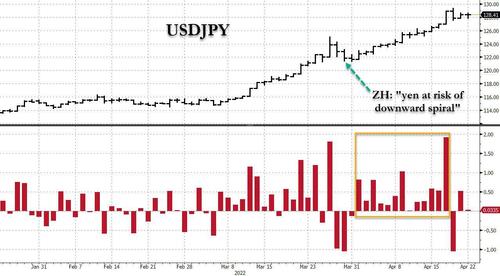
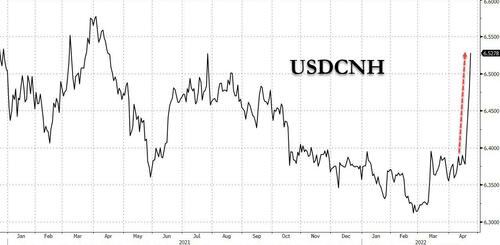

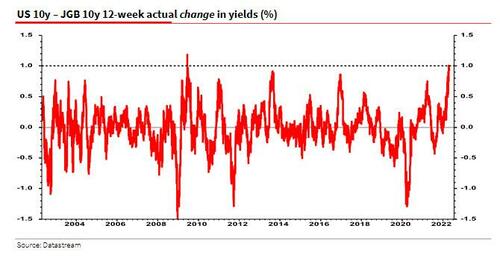
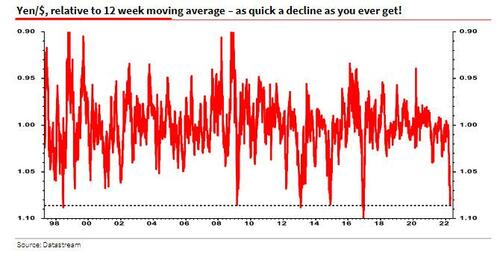
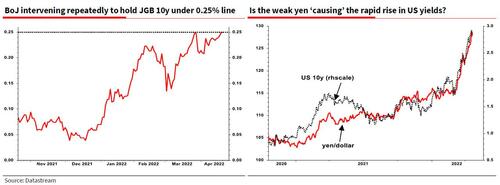
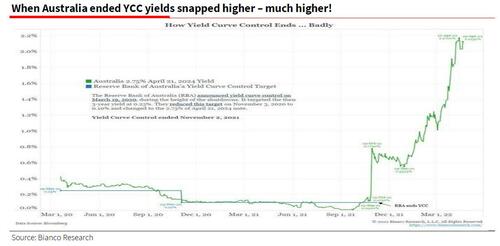










No comments:
Post a Comment